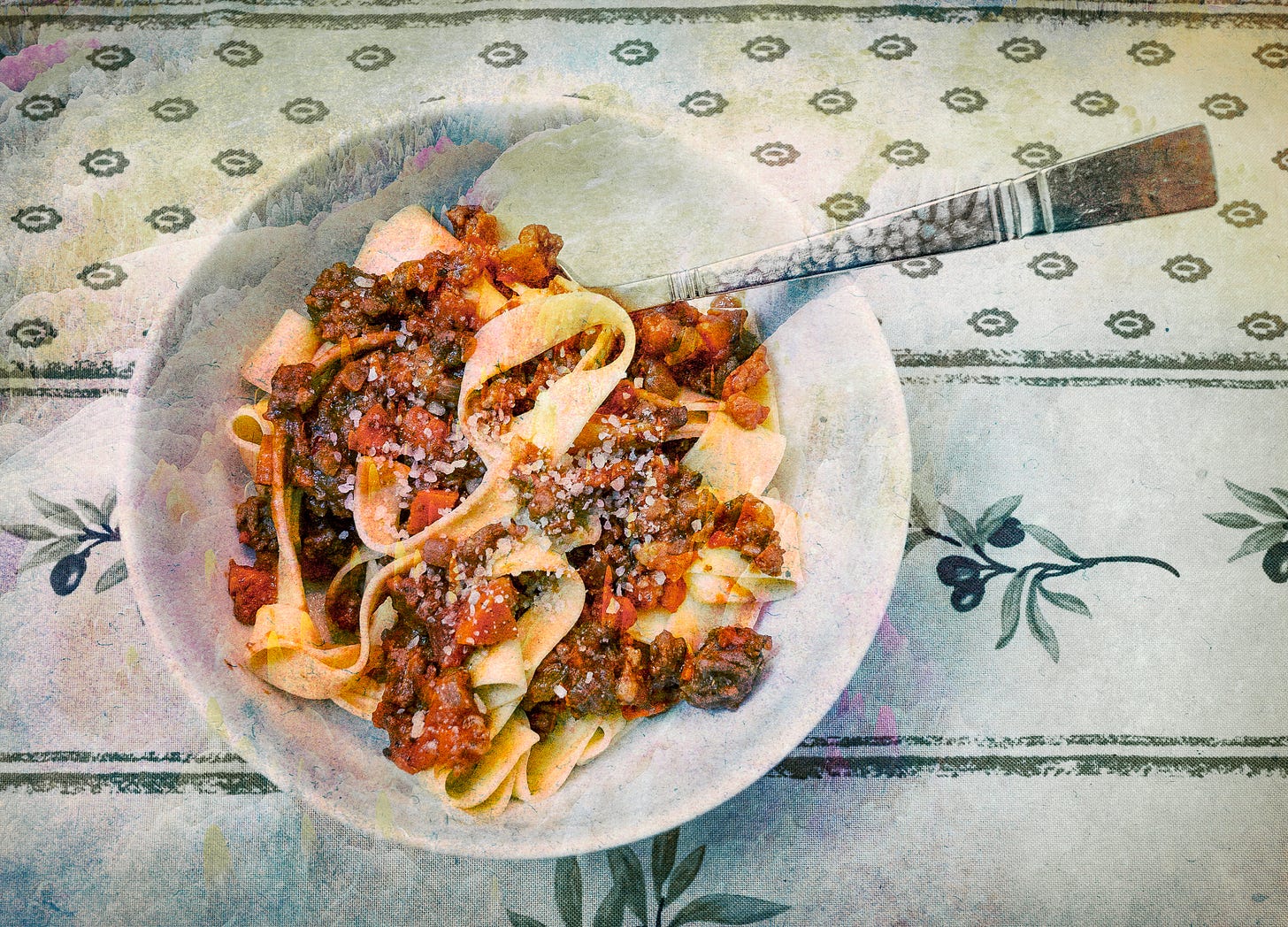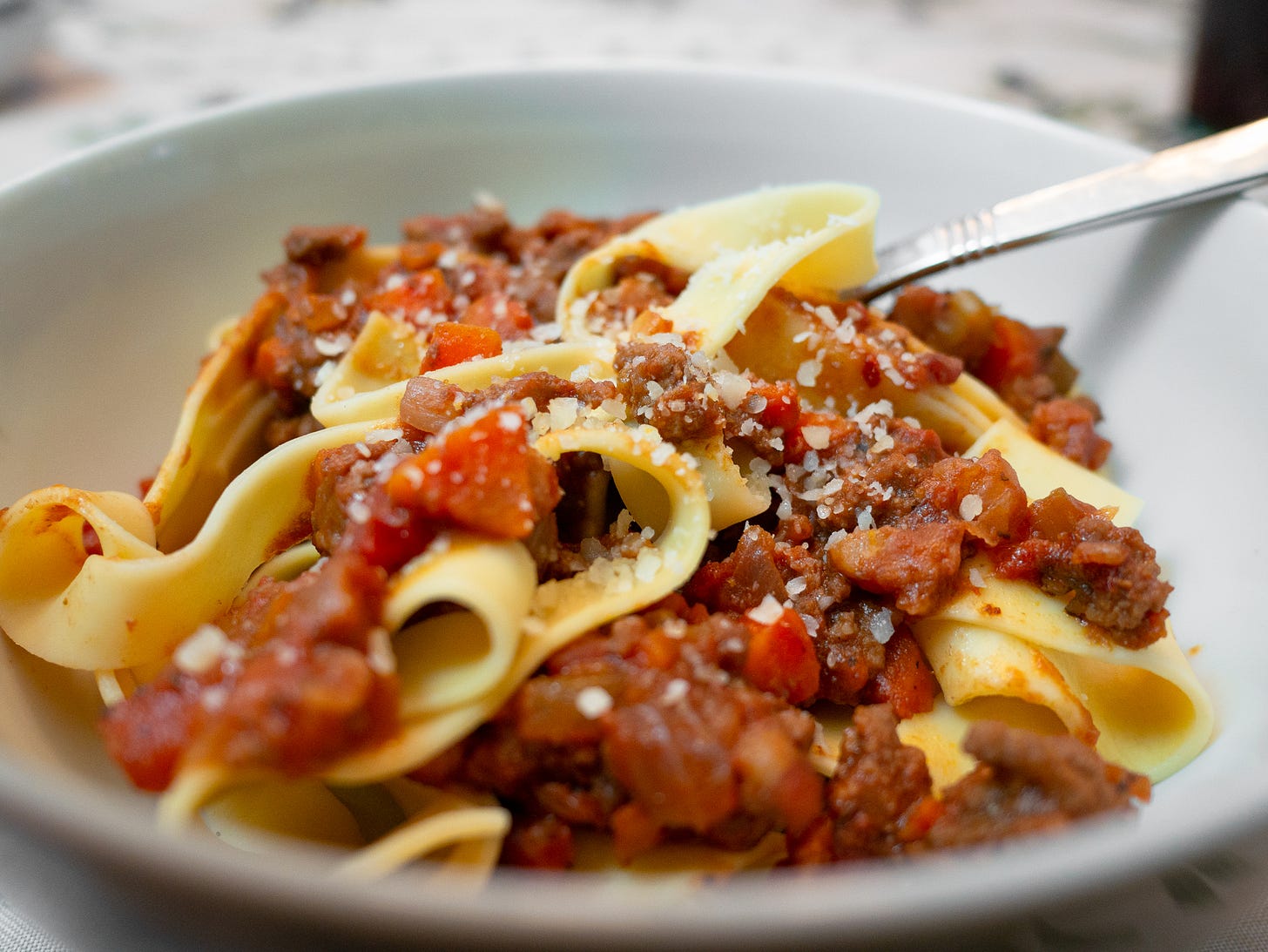Go tagliatelle on the mountain
In praise of supporting actors, particularly when it comes to the most famous pasta dish in Bologna, Italy.
Bologna, Italy is known for many things: the oldest continually operating university in Europe, politics that lean left, Medieval towers that lean both ways, 24 miles (yes miles) of porticoes (covered walkways), and some of the best food in Italy. At the top of its food chain, so to speak, sits tagliatelle al ragu. Calling it wide noodles in meat sauce would be like calling F1 a car race: accurate, but insufficient.
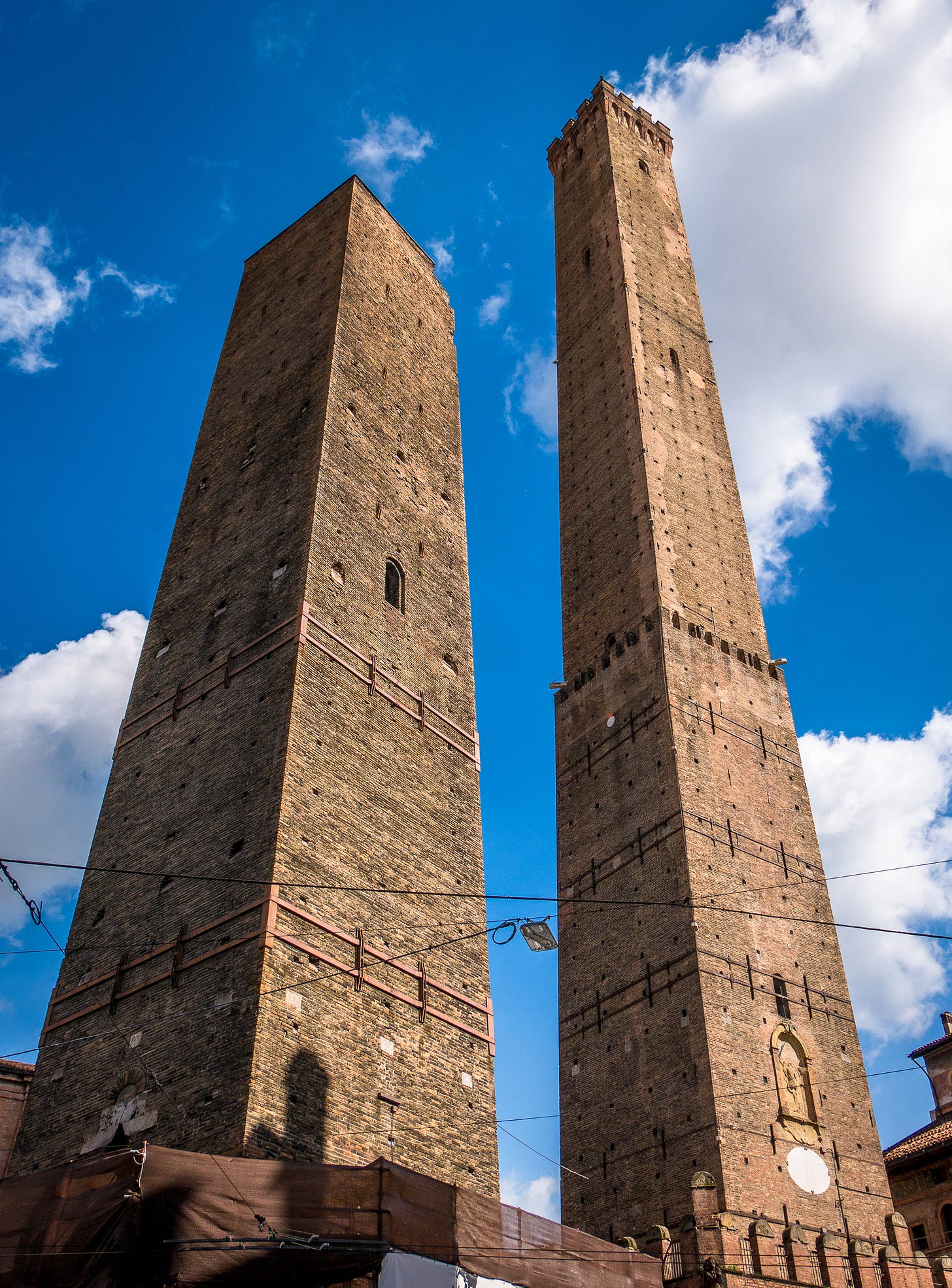
You’ve probably had a variation in an Italian restaurant: Spaghetti Bolognese. While using spaghetti instead of tagliatelle pasta and referring to the ragu sauce as “Bolognese” might seem inconsequential to you, doing so in Bologna could get you thrown off of one of those leaning towers. Well, not quite. They don’t take their pasta that seriously. But close.
For them, the ragu consists of some combination of ground meat (usually beef and veal or beef and pork but I had variations that also included duck and wild boar), pancetta (a kind of bacon), onion, celery, carrots, red wine, and tomato paste (though, surprising to me, some of the best versions use no tomatoes). Some versions will include milk or cream, olive oil, and other spices as well. They simmer the sauce to both reduce it and to build up the complex layers of flavor. They serve it, topped with their famous Parmigiano Reggiano freshly grated cheese, over a bed of tagliatelle pasta—long flat noodles whose width must be precisely 12,270th the height of the Asinelli Tower, the tallest one in Bologna. That means a cooked width of 8mm or about .314 inches. I can’t think of another place where architecture dictates food size. But as noted, few places take their food as seriously as they do in Bologna.
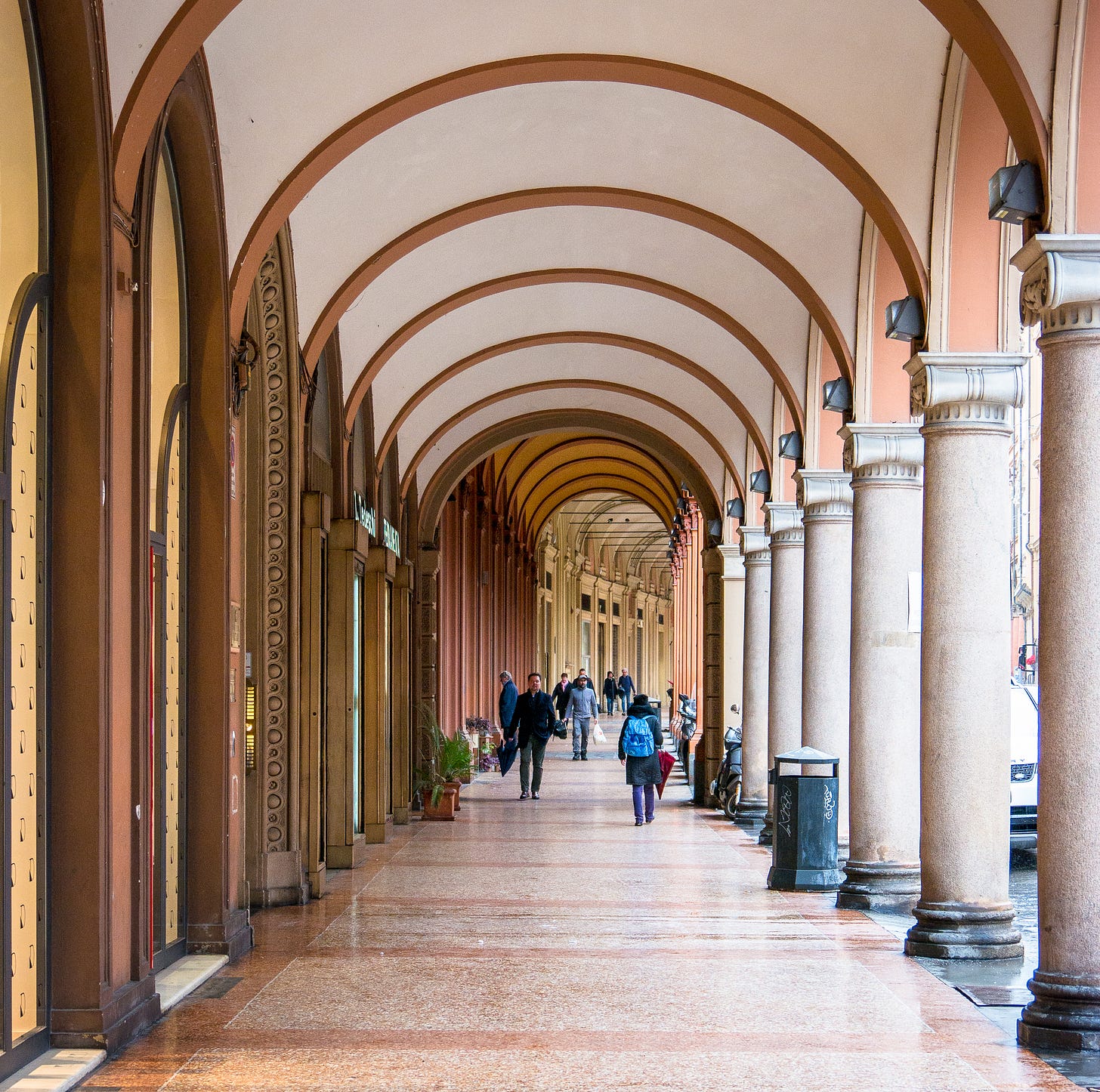
I made it a quest on a recent trip there to try as many versions of tagliatelle al ragu as I could. Combined with a similar goal of checking out Bologna’s top gelato spots, I came away with some surprising insights, a wider midriff, and hence, a kindred connection to one of Bologna’s nicknames: La Grassa (The Fat).
In almost a week in Bologna, I never had a bad version of tagliatelle al ragu. But I expected there to be a greater differentiation in the sauce. Yes, I could taste the difference between the pork, duck, and wild boar versions. But among those made with the same kind of meat, the variances in flavor were subtle. Some did have more layers, one was oilier, some had larger chunks of meat. Overall, however, to my less-than-sophisticated palate the sauces were fairly consistent.
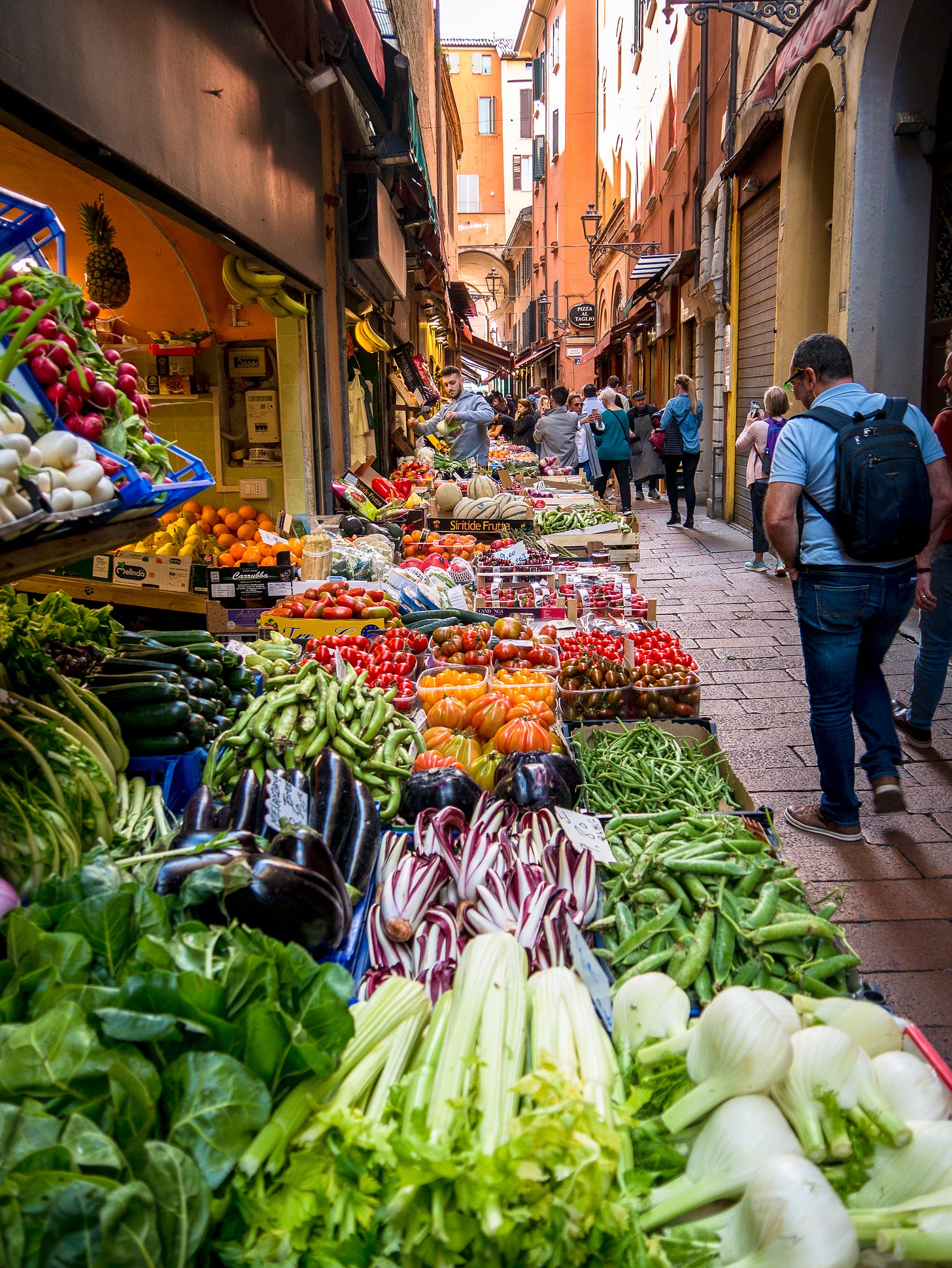
What surprised me was the significant difference in the pasta. Some noodles were more al dente (chewier) than others. Some were thicker (not wider), and one had a side-to-side curl to it, like a straw cut lengthwise or the half of the population who can bend their tongues in half. I liked it for the intriguing mouth feel it imparted. Plus it had a bit of a wave to its curled edges which gave the dish a nice shimmer. Hey, you spend time in Bologna and you too will be talking about how food shimmers.
Some tagliatelle was produced in a pasta machine where they put in the dough and the machine rolls out the flattened (and separated) pasta. Other was completely handmade, rolled out with a traditional wide wooden rolling pin and then sliced to that exacting width. Apparently this is the preferred (though more painstaking) method because the grain of the rolling pin imparts a rougher texture than the pasta machine. The result is that the sauce adheres to the increased toothiness of the noodle better.
I probably ate tagliatelle al ragu a half dozen times in my quest there in Bologna and it never got old (though I did avoid having it twice in the same day, something I can’t say about gelato). I didn’t treat this whole affair as a competition—no pocket scorecard with little check boxes or critics notes. I simply enjoyed each meal. In doing so, I gained a surprising insight.
The beauty of travel—or the creative process, for that matter—often lies in its serendipitous nature. You go looking for one thing and discover another. Before Bologna, I have to admit that I saw pasta as sort of the supporting cast for the lead actor, the sauce. Now, I have a whole new appreciation for what a difference a simple noodle can make. It’s similar to learning, on a trip to Japan, that sushi chefs are valued as much or more for their perfection of each grain of rice as they are for the fish. Sometimes the seemingly little things turn out to be the big things.
It makes me wonder in what other areas of my life am I focusing on the bright shiny object and missing what really makes the most difference.


